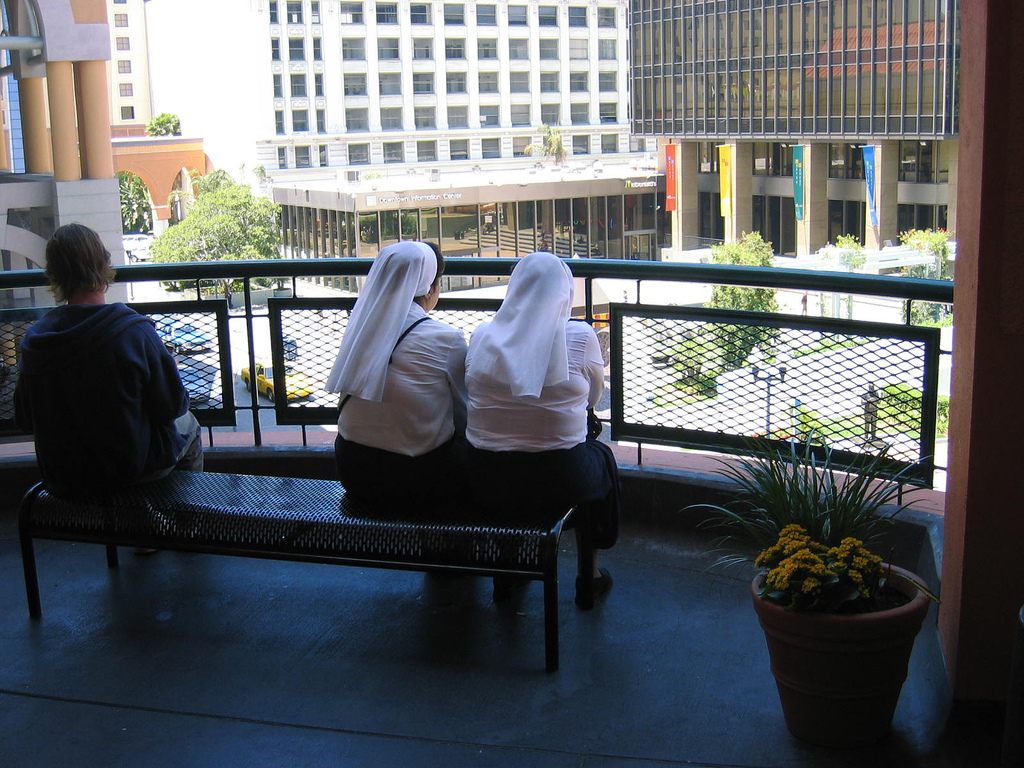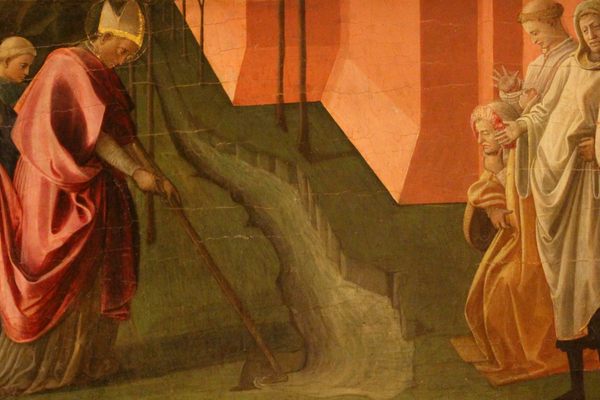The Neurologists Who Fought Alzheimer’s By Studying Nuns’ Brains
The 30-year partnership between convents and brain researchers has been unexpectedly rewarding.

Nuns walking in Rome. (Photo: Evelyn Hill/CC BY 2.0)
In Mankato, Minnesota, in 1991, David Snowden sat across from an 100-year-old nun named Sister Mary, administering a test. He asked her to remember a list of words, to draw geometric shapes, and she passed each exam while she talked and laughed, constantly aware.
After Sister Mary’s death at 102, a lab examined her brain. She had been alert and without memory loss; but instead of looking at a healthy brain, scientists saw one riddled with visible knots of protein—an indication of full-blown Alzheimer’s disease. Sister Mary was part of a new research project on Alzheimer’s called the Nun Study, and its findings not only shed light on the disease, but inspired the largest Alzheimer’s studies that exist today.

In 1986, when David Snowden began the Nun Study, Alzheimer’s researchers had a problem: while they were able to obtain donated brains from those who were being treated for dementia at research clinics, there were few non-diseased brains available for scientists to compare them against. When Snowden approached the School Sisters of Notre Dame, however, he found that they were very enthusiastic about the idea of participating in an ongoing study of their cognitive abilities until death. Afterward, they would donate their brains to science.

The congregation of Notre Dame and the Atlantic Midwest Province of the School Sisters of Notre Dame. (Photo: Arlene Flaherty/Our Voices/CC BY-ND 2.0)
The match was almost too good to be true: the School Sisters of Notre Dame’s mission is to teach and open schools around the world. When they learned that they could help others learn about Alzheimer’s disease, a tragic and extreme form of dementia that typically begins after age 60, the sisters were happy to find they could do so even after their deaths.
“One of the unique aspects of this study were the large numbers willing to donate their brain whether they had any dementia or not,” says Sister Charlene, the order’s representative for the study. The sisters’ contributions added to growing evidence that the risk of Alzheimer’s does not increase with age.
The participants of the Nun Study included 678 women, all over age 75, with some already exhibiting Alzheimer’s symptoms. Since the sisters at the convent lived similar lifestyles, many factors could immediately be ruled out, providing some experimental control. Over the next few decades the Sisters dutifully took cognitive, memory and physical strength tests: recalling word lists, pulling on weighted cords, and getting physical and mental checkups.
The participating nuns shared written accounts of their lives and personal essays from when they first took their vows with researchers, and even these turned out to provide possible clues to the disease. Indeed, Snowden found that sisters who wrote more complex personal essays in their youth tended not to develop the disease. Sister Mary, unlike some participants who developed the disease, remained intellectually active into her late 80s.

A PT scan of a brain with Alzheimer’s disease. (Photo: US National Institute on Aging/Public Domain)
The Nun Study unleashed a whole new world of Alzheimer’s studies, and advancements continue today through the participation of the devout. The Religious Orders Study of Rush University, which expands on the work of the Nun Study, began in 1992.
“We’ve identified numerous risk factors for getting Alzheimer’s clinically…30 or probably more, depending on how you figure genetic factors,” says Dr. David Bennett, the neurologist who leads the Religious Orders Study. These factors, which range from exercise to mood to susceptibility to diabetes, stress and depression, are in constant examination.
Compared to the original Nun Study, the Religious Orders Study is huge: it currently has over 1,350 participants, involves data from over 40 religious orders (including the School Sisters of Notre Dame), and is studied alongside the separate Rush Memory and Aging Project, a study of over 1,850 laypeople. It also includes more diverse group across races and backgrounds.
Thanks to the impressive sample size, Bennett and his colleagues can note brain differences and similarities across much larger populations than the original Nun Study, giving a more accurate view of what happens in a brain or body with the disease. Every person in the study will go through lifelong checkups and eventually donate their brain to science. Currently, these two studies are the only examples of their kind in the world.
Recently, Dr. Bennett and his colleagues found that a single risk factor, known as APO E, is strongly associated with the physical brain characteristics of Alzheimer’s. A paper they published in February of this year explores its mechanisms. Eventually, the team hopes to find ways to halt memory loss from the disease.
This, along with new data drawn from the Religious Orders Study, may hold potential for future treatments, and shed light on why some people can have the disease pathology in their brain without experiencing its symptoms, as Sister Mary did. Genes that affect the immune system in particular may also be a significant factor.

Nuns in San Diego, California. (Photo: Ryan/CC BY 2.0)
While many of the original Nun Study participants have since passed away, the remaining sisters are living up to the precedent set by Sister Mary. According to Sister Charlene, the youngest participant in the study turned 100 as of February of this year; eight participants are still alive. At the University of Minnesota, the original location of the Nun Study, researchers continue to use the data and brain tissue from the participants, sometimes in partnership with other studies and research centers.
“The brain is in ultimate high rent district…it’s not like an extra kidney or an extra lung,” says Dr. Bennett. “The brain reserve is basically its plasticity…the ability to take a piece of brain and fundamentally teach it to do something else.”
Our own ability to be flexible in understanding Alzheimer’s is, it turns out, as important as the adaptability of our brains. While our understanding of Alzheimer’s is still evolving, one thing is certain: even from beyond the grave, the sisters of the Nun Study still have a lot of teaching to do.
Update, 3/25: The Rush Memory and Aging Project includes 1,850 laypeople, not 1,150 as previously stated. We regret the error.




























Follow us on Twitter to get the latest on the world's hidden wonders.
Like us on Facebook to get the latest on the world's hidden wonders.
Follow us on Twitter Like us on Facebook